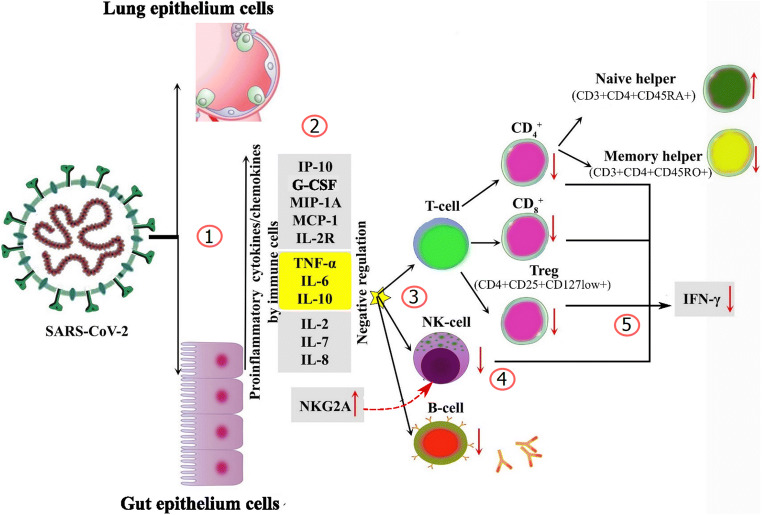Fig. 1.
Host immune responses during SARS-CoV-2 severe infection. (1) SARS-CoV-2 virus enters into the cell via binding of superficial S glycoprotein on the envelope of the virus to ACE2; the viral RNA genome is transferred from the envelope into the cytoplasm and provokes a strong innate immune response by monocyte-macrophages and dendritic cells. (2) The innate immune response is initially triggered by epithelial cells, macrophages, and neutrophils by chemotaxis of pro-inflammatory cytokines. High concentrations of TNF-α, IL-6, and IL-10 have also negative regulation on T cell survival or proliferation. (3) In the next stage, adaptive immune responses are triggered involving T and B lymphocytes to complete the complete immune response. Immune dysregulation is characterized by inflammatory cascade, cytokine production, hyper-inflammation, and T cell exhaustion. (4) High expression of NKG2A contributed to NK cell dysfunction. (5) Exhausted T cells and NK cells are characterized by decreased production of effector cytokines (e.g., IFN-γ)

